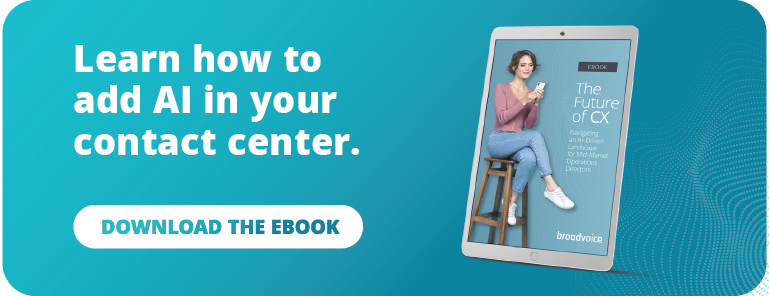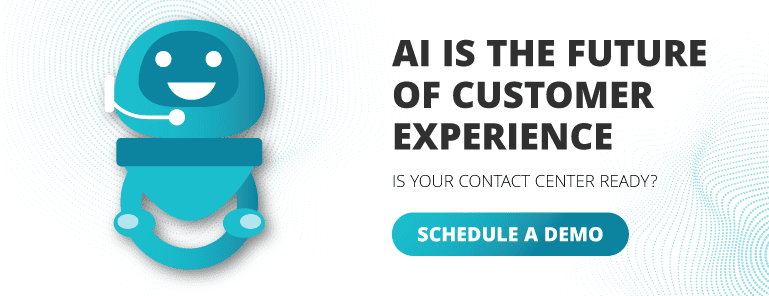Did you know increasing customer retention rates by just 5% can increase your profits by up to 95%? What’s more, when you prioritize your customer experience, you can grow revenues between 4% and 8% above your market standard. If you’re not evolving your customer experience, you’re not only risking your bottom line, but also your company’s reputation.
As AI, automation, and advanced analytics reshape customer expectations, it’s time to consider a digital transformation strategy upgrade to stay competitive and meet the demand head-on.
Why 2025 is the Time to Upgrade Your Digital Transformation Strategy
Your customers crave simplicity. They want seamless service, personalized experiences, and quick answers when they reach out to you, whether it’s on social media or SMS. And they’re not waiting. Which really isn’t a surprise. Afterall, customers can buy groceries through their favorite retailer’s app and have ‘em delivered in a few hours. We’ve not just enabled instant gratification. We’ve trained them to expect it.
So now, to meet their demands and to stay competitive in the service arena, it’s time to turn to new technology strategies that add AI, machine learning, and data into our customer experience (CX) frameworks.
By adding AI, you can streamline routine tasks, reduce agent workload, and save big on staffing during peak times—all while enhancing service quality.
The Key Elements of a Modern Digital Transformation Strategy for Your Contact Center
To stay relevant, your digital transformation strategy has to go beyond the basics. Below are some critical elements that will keep your contact center up to date.
- AI-powered customer insights. AI isn’t just about crunching numbers. It looks for and finds patterns inside of your customer data. With AI, your data turns into actionable insights, giving you the power to personalize in a way that’s impossible manually. For instance, analyzing behavioral data can help your agents anticipate issues, tailor responses, and boost the overall experience.
- Omnichannel integration. Today’s customers expect continuity across every platform. Whether they start on social media and end up on a live chat or call, the experience should be seamless. By connecting your channels and mapping customer journeys, you can craft a fluid experience for customers, no matter where they start (or end) their journey.
- More self-service options. Self-service tools like chatbots, IVRs, and intelligent virtual assistants (IVAs) aren’t just nice to haves—they’re essential to a modern contact center strategy. They cut your center’s volumes by giving customers a route to answers without touching a human. What’s more, according to Gartner, almost 62% of millennials and 75% of Gen-Z customers prefer self-service almost all the time.
- Agile workforce management (WFM). Managing your agent’s workload is crucial to prevent burnout, especially during high-traffic periods. With real-time data, AI-backed WFM tools adjust schedules dynamically, so agents stay productive without being overworked. And having that kind of flexibility means you can better manage costs while retaining a healthy, motivated workforce.
Learn more about how an AI-backed workforce management tool can help your team’s efficiency.
Building the Business Case: Tactical Steps You Can Take to Convince Your Exec Team
Updating your digital transformation strategy requires buy-in from the executive team. Here’s a roadmap to building a business case that’s impossible to ignore.
Step 1: Assess and Benchmark Your Current State
Start with an audit of your existing digital transformation initiatives to pinpoint any gaps. Which processes are dragging? Where are customer complaints piling up? Use this baseline to benchmark against industry standards and see where you’re falling short. Maybe your call handling time is above average, or self-service rates lag. These insights will underscore the need for a strategic overhaul.
Step 2: Align Your Goals to Business Objectives
Your digital transformation goals shouldn’t live in a vacuum (because it sucks). Instead, they should align with broader business objectives. Think in terms of operational efficiency, revenue growth, and customer loyalty. For instance, reducing call handling time and expanding self-service options can drive efficiency and let your team tackle the more complex issues, leading to increased customer satisfaction and brand loyalty.
Step 3: Quantify the Expected ROI of an Updated Strategy
Concrete ROI numbers can make all the difference in securing approval. Here are some angles to focus on:
- Cost savings. Show potential savings from automation, reduced labor needs, and increased self-service adoption. A robust chatbot strategy, for instance, could cut support costs by 30% by handling simple queries.
- Customer satisfaction and retention. Look at the impact on customer satisfaction and retention metrics like net promoter score (NPS) and customer lifetime value (CLV). Faster, more personalized service not only retains customers but also converts them into advocates who can boost brand loyalty and revenue.
- Employee efficiency and engagement. Document productivity gains from deploying more efficient tools. AI tools that streamline agent workflows can significantly reduce handling time and improve morale by eliminating repetitive tasks, freeing agents to focus on more engaging work.
Step 4: Anticipate and Address Potential Objections
Not every executive is going to be sold right away. Be ready to address common objections like budget concerns, integration complexities, and ROI timelines. Use data-backed responses and have examples of companies that have benefited from similar transformations. For instance, one major telecom implemented AI saw a 15% improvement in resolution time, leading to substantial cost savings. Look for examples in your industry to really help the message sink in.
How to Present to Your Executive Team
When it’s time to present, focus on metrics that matter to your company—like customer satisfaction (CSAT) scores, operational cost reductions, and productivity gains. Skip any data that doesn’t directly support your case; keep your pitch lean and relevant to hold your executives’ attention. It may come as a shock, I know, but your execs have a LOT on their minds at any given moment, so they need the facts as fast as possible to make educated, strategic decisions.
Create a clear narrative that connects the dots between an updated digital transformation strategy and your company’s core goals. Back it up with real-world success stories, showing how similar companies (in size, industry, customers, etc.) have seen a return from using AI, automation, and agile WFM.












